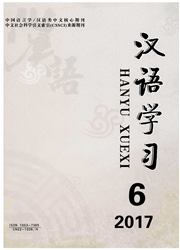
欢迎您!东篱公司
退出

 中文摘要:
中文摘要:
"(是)+NP+VP的"和"VP的+是+NP"在话语功能上的差异源自NP的指称性质的差异:"(是)+NP+VP的"中的NP为对比焦点,是上文已经引入的信息;而"VP的+是+NP"中的NP为常规焦点,是为下文引入新的事件角色。二者话语功能的差异可以从这两个句式信息结构和主位结构的组配上得到解释。
 英文摘要:
英文摘要:
The present paper firstly introduces Halliday(1994)'s analysis of information structure and thematic structure for cleft and pseudo-cleft in English. Based on the parallelism of the differences between cleft and pseudo-cleft in English and "(shi) + NP + VPde" and "VPde +shi + NP" in Chinese,this paper argues that the difference of discourse function between "(shi) + NP + VP de" and "VP de + shi + NP" can be accounted for from the different positions of focus NP in thematic structure of the two sentence patterns.
 同期刊论文项目
同期刊论文项目
 同项目期刊论文
同项目期刊论文
 期刊信息
期刊信息
